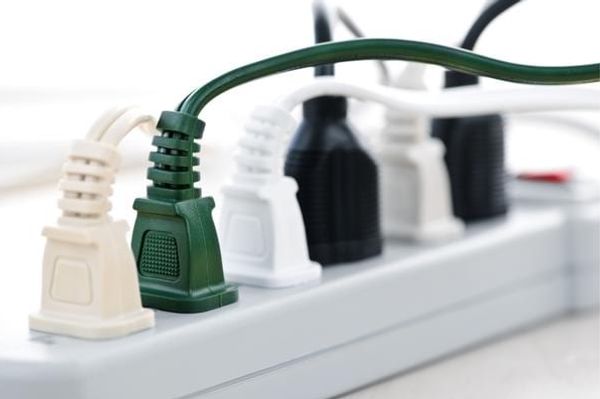Using power strips for electrical appliances can be practical and a money-saver. However, it’s important to be aware of the risks that come with it, especially for those in the 45-65 age range. Plugging in high-energy-consuming devices or overloading the power strip can lead to serious problems like damaged appliances, power outages, and even fires.

How do you know this? Well, it happened to me! Since then, I’ve become extremely careful about what I plug into power strips. In this article, I’ll share 9 devices that you should never plug into a power strip to help you stay safe.
First, Check the Maximum Power
Before we get into the devices, let’s talk about the maximum power rating of the power strip. This information is usually indicated on the power cable. Before connecting any devices, it’s crucial to check this rating.

To determine the power consumption of a device, look for the information on the device itself. For example, if your power strip has a maximum power rating of 3500W and you plug in an oven (2500W), a vacuum cleaner (800W), and a kettle (250W), you’ll exceed the limit (2500 + 800 + 250 = 3550W). In this case, it’s important to unplug one device to stay below the maximum threshold and avoid dangerous situations.
Devices to Avoid Plugging into a Power Strip
Now, let’s dive into the devices that should not be connected to a power strip.
- Oven: Ovens are very energy-intensive and should always be plugged into a wall outlet to avoid the risk of overheating.
- Refrigerator: While not the most energy-consuming appliance, refrigerators run continuously and should not be plugged into a power strip.
- Washing Machine: With an annual energy consumption of about 1150 kWh, washing machines should be directly connected to a wall outlet to avoid short circuits and overheating.
- Auxiliary Heating: These devices can quickly overload power strips and should always be plugged into a wall outlet.
- Microwave: Microwaves consume around 70 kWh per year, making them unsuitable for power strips.
- Coffee Maker: Despite its small size, a coffee maker consumes about 165 kWh per year and should be plugged into a wall outlet.
- Toaster: Toasters can consume between 500 and 1000W annually, so it’s best to avoid plugging them into power strips.
- Another Extension Cord: Connecting multiple extension cords can quickly exceed the power strip’s maximum capacity, posing a fire hazard.
- Internet Box, Computer, and TV: While these devices don’t consume much electricity, they are sensitive to electrical issues. To protect them, it’s recommended to use a surge protector instead of a regular power strip.
Conclusion
Now that you know which devices to avoid plugging into a power strip, you can ensure your safety. While the risk of fire is relatively low, it’s always better to be safe than sorry. Overheating is a real danger that should never be ignored.





